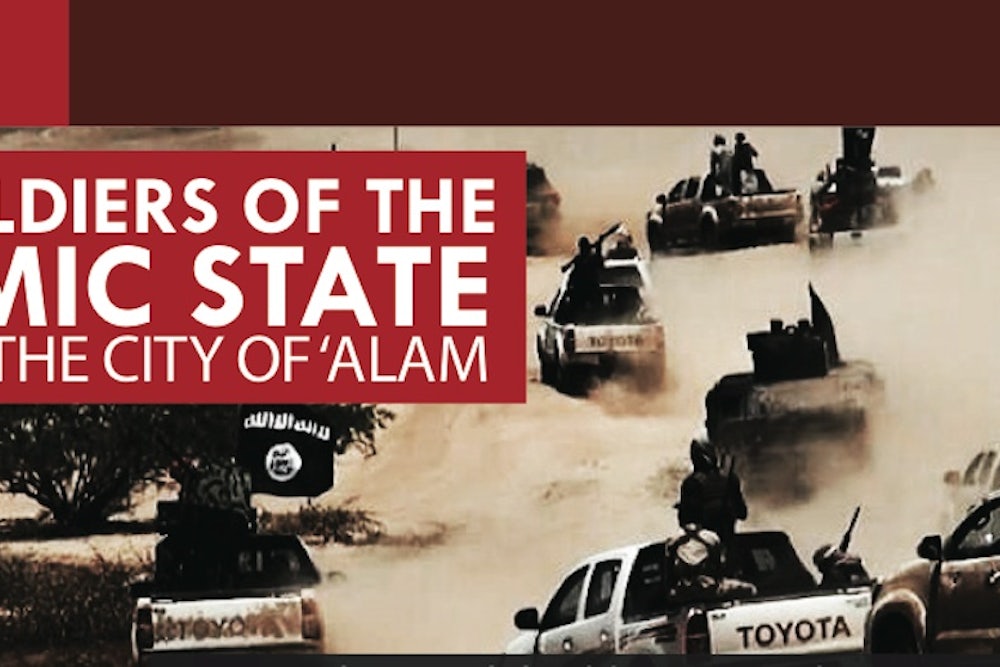“In almost every aspect, ISIS is really seeking to distance itself, put itself in another echelon from Al Qaeda," Colin Clarke, a political scientist at RAND, told me in a phone call. "Think of it as wanting to be Google or Apple…AOL email is like Al Qaeda right now.”
How did ISIS replace Al Qaeda as the go-to organization for young jihadists?

ISIS's tactics span all media, with devoted Twitter accounts and Youtube channels, including ones that showed the horrifying—and slickly shot—execution of photojournalist James Foley last week. But ISIS's English-language magazine, Dabiq, offers a useful study into their PR strategy, especially when compared to Al Qaeda's English magazine, Inspire.
“Dabiq is a far more comprehensive attempt to recruit westerners than Inspire,” Clarke said. “It’s really a one-stop shop for all things ISIS.”
“Dabiq” refers to a small town near Aleppo where the prophet Muhammad foretold that Muslims and the West would clash before the apocalypse. It follows that much of Dabiq’s content focuses on a coming apocalypse, while pulling out the same glossy stops that one would expect from an American magazine.
Take their second issue, “The Flood.” The cover photo is a sleek rendition of Noah’s Ark, and an article by Abū ‘Amr Al-Kinānī, “It’s Either the Islamic State or the Flood,” argues that the Caliphate is the “ark,” while the rest of Earth will soon be swept away. He writes that “we’re completely ready to stand in the face of anyone who attempts to divert us from our commitment to making the religion of Allah triumphant over all other religions, and that we will continue to fight the people of deviation and misguidance until we die trying to make the religion triumphant.”
Al Qaeda isn’t selling the same vision. Articles in Inspire range from tutorials ("How to make a bomb in the kitchen of your mom”) to Q&As with prominent Al Qaeda members and denunciations of Western culture, but don’t call for the establishment of an Islamic State or elimination of all other religions.

“Inspire serves more as a how-to guide for individual attacks than an articulation of an overall religious, military, and political vision,” writes Harleen Gambhir in a report by the Institute for the Study of War. Beyond that, Inspire lacks the sleek production values and religious justifications of Dabiq. “What you see with Dabiq is the combination of Islamic theological credentials with battlefield success,” Clarke noted. “ISIS really takes great care to back up everything that it does with religious justification. That’s one area where Al Qaeda got soft over time.”
Most terrifyingly, Dabiq documents the lengths to which ISIS will go to achieve their goals. Its pages are littered with pictures of the mutilated corpses of "infidels," while their inaugural issue, "The Return of the Khilafah," featured a photoshopped image of Western troops engulfed in flames.
Ben Connable, the former head of the Marine Corps’ cultural intelligence program and a senior analyst at the RAND Corporation, says that while “Al Qaeda has hesitated in some ways [with] statements against indiscriminate bombings and attacks," the Islamic State “has been less restrictive, and far more violent and willing to do just about anything to achieve their ends. That unrestricted behavior generates some excitement.”
